77305-LIFFE-Euronext Brochure - FEP
77305-LIFFE-Euronext Brochure - FEP
77305-LIFFE-Euronext Brochure - FEP
Create successful ePaper yourself
Turn your PDF publications into a flip-book with our unique Google optimized e-Paper software.
How the <strong>Euronext</strong>.liffe Markets Work
● ● ● ● ● ● ● ● ● ● ● ● ● ● ● ● ● ● ● ● ● ● ● ● ● ● ● ● ● ● ● ● ● ● ● ● ● ● ● ● ● ● ● ● ● ● ● ● ● ● ● ● ●● ● ●<br />
This document is an introduction to how the <strong>Euronext</strong>.liffe markets work detailing how trading<br />
takes place on <strong>LIFFE</strong> CONNECT.The vast majority of the <strong>LIFFE</strong> CONNECT functionality is<br />
common to all markets.Where there are differences these are highlighted clearly.<br />
<strong>Euronext</strong> refers to <strong>Euronext</strong> N.V. and any company which is at least a 50% owned subsidiary of <strong>Euronext</strong> N.V.<br />
All proprietary rights and interest in this publication shall be vested in <strong>Euronext</strong> and all other rights including, but without<br />
limitation, patent, registered design, copyrights, trademark, service mark, connected with this publication shall also be vested<br />
in <strong>Euronext</strong>.<br />
<strong>LIFFE</strong> CONNECT is a trademark of <strong>LIFFE</strong> Administration and Management. <strong>LIFFE</strong> Administration and Management is a part<br />
of the <strong>Euronext</strong> Group.<br />
No part of this publication may be redistributed or reproduced in any form or by any means or used to make any derivative<br />
work (such as translation, transformation, or adaptation) without written permission from <strong>Euronext</strong>.<br />
<strong>Euronext</strong> shall not be liable (except to the extent required by law) for the use of the information contained herein however<br />
arising in any circumstances connected with actual trading or otherwise. Neither <strong>Euronext</strong>, nor its servants nor agents, is<br />
responsible for any errors or omissions contained in this publication.This publication is for information only and does not<br />
constitute an offer, solicitation or recommendation to acquire or dispose of any investment or to engage in any other<br />
transaction.All information, descriptions, examples and calculations contained in this publication are for guidance purposes only,<br />
and should not be treated as definitive.<br />
Those wishing either to trade <strong>Euronext</strong> futures and options contracts or to offer and sell them to others should establish the<br />
regulatory position in the relevant jurisdiction before doing so.<br />
<strong>Euronext</strong> N.V.<br />
P.O. Box 19163<br />
1000 GD Amsterdam<br />
The Netherlands<br />
Tel +31 (0)20 550 4444
● ● ● 1<br />
● ● 2 ●<br />
● ● ●3<br />
● ● 4 ●<br />
● ● ●5<br />
● ● 6<br />
●<br />
Contents<br />
Introduction 1<br />
Background 2<br />
● <strong>LIFFE</strong> CONNECT – <strong>Euronext</strong>.liffe’s state of the art trading platform 2<br />
● <strong>Euronext</strong>, <strong>LIFFE</strong> and <strong>Euronext</strong>.liffe 2<br />
The benefits of <strong>Euronext</strong>.liffe and <strong>LIFFE</strong> CONNECT 3<br />
The <strong>LIFFE</strong> CONNECT Trading Host 4<br />
● Access to <strong>LIFFE</strong> CONNECT 4<br />
● What happens to a trade? 9<br />
● Market data 9<br />
Trading 10<br />
● Market Services 10<br />
● Customer Escalation 10<br />
● Anonymity 10<br />
● System Configuration 10<br />
● Trade Priority/Matching 12<br />
● Examples of Algorithms 12<br />
Entering and Managing Orders 15<br />
● Submitting Orders 15<br />
● Price Limits 15<br />
● Order Types 16<br />
● Order Attributes 17<br />
● Guaranteed Cross Mechanism for Brussels and Paris Markets 18<br />
● Crossing and Pre-negotiated Trading for the <strong>LIFFE</strong> market 18<br />
● Recognised Strategies on <strong>LIFFE</strong> CONNECT 19<br />
● Volatility Trades (Delta Neutral) 19<br />
● Order Management 20<br />
● Wholesale Trading 20<br />
● FLEX ® Options 20
● ● ● 7<br />
● ● ●8<br />
● ● 9 ●<br />
● ● 10<br />
●<br />
● ● ●<br />
● Automated Price Injection Models 20<br />
● Termination of a Trading Session and Subsequent Re-Start 20<br />
The Trading Day 21<br />
The Responsible Person 23<br />
Implied Spread Trading 24<br />
Settlement Prices and Clearing Process 26<br />
● An Overview 26<br />
● Daily Settlements 26<br />
Contacts Inside back cover
● ●●1 Introduction<br />
This brochure provides a description of<br />
how derivatives trading takes place on <strong>LIFFE</strong><br />
CONNECT for the <strong>Euronext</strong>.liffe markets.<br />
This ranges from the ways in which the trading<br />
platform can be accessed, to how orders are<br />
input, matched and cleared and how the markets<br />
are controlled by the relevant Market Services<br />
departments in Brussels, London or Paris.<br />
<strong>LIFFE</strong> CONNECT functionality is generally<br />
the same for all <strong>Euronext</strong>.liffe markets. However,<br />
there is some functionality which has been<br />
tailored for individual markets, as <strong>LIFFE</strong><br />
CONNECT continues to be enhanced to<br />
ensure that users of <strong>Euronext</strong>.liffe markets<br />
have the functionality that they require.<br />
How the <strong>Euronext</strong>.liffe Markets Work<br />
1
2 How the <strong>Euronext</strong>.liffe Markets Work<br />
● ●●2 ●<br />
Background<br />
<strong>LIFFE</strong> CONNECT – <strong>Euronext</strong>.liffe’s<br />
state of the art trading platform<br />
<strong>Euronext</strong>.liffe’s electronic trading platform<br />
<strong>LIFFE</strong> CONNECT - was designed and<br />
developed by <strong>LIFFE</strong> in conjunction with<br />
customers and selected Independent Software<br />
Vendors (ISVs) to replace its open outcry<br />
trading floor.<br />
The first contracts to migrate from the<br />
<strong>LIFFE</strong> trading floor to <strong>LIFFE</strong> CONNECT<br />
were Individual Equity Options on 30 November<br />
1998. Since then, the transition of contracts<br />
from the trading floor environment to screen<br />
has taken place in phases to ensure a smooth<br />
transition, with each release of <strong>LIFFE</strong><br />
CONNECT focusing on a specific market<br />
segment. Following the successful migration of<br />
the Exchange’s commodity products to <strong>LIFFE</strong><br />
CONNECT on 27 November 2000, <strong>LIFFE</strong><br />
became a fully automated exchange, with its<br />
entire product range trading electronically.<br />
● <strong>Euronext</strong>, <strong>LIFFE</strong> and <strong>Euronext</strong>.liffe<br />
<strong>Euronext</strong> was formed by the merger of the<br />
Amsterdam, Brussels and Paris cash and<br />
derivatives exchanges in September 2000.<br />
The <strong>Euronext</strong> Group has since grown further,<br />
adding BVLP (the Portuguese cash and<br />
derivatives exchange) and <strong>LIFFE</strong> (The London<br />
International Financial Futures and Options<br />
Exchange).The derivatives businesses of<br />
<strong>Euronext</strong> and <strong>LIFFE</strong> are being combined under<br />
the <strong>Euronext</strong>.liffe umbrella with the phased<br />
migration of <strong>Euronext</strong> derivatives markets to<br />
<strong>LIFFE</strong> CONNECT, the most sophisticated<br />
electronic derivatives trading platform in the<br />
world.The Brussels and Paris markets will<br />
migrate to <strong>LIFFE</strong> CONNECT in Spring 2003,<br />
with Amsterdam and Lisbon to follow.This<br />
document is focused on the Brussels, <strong>LIFFE</strong><br />
and Paris markets.
● ●●3<br />
●<br />
●<br />
●<br />
A wider range of products to trade<br />
Through <strong>LIFFE</strong> CONNECT, <strong>Euronext</strong>.liffe<br />
customers will have access to a wider range of<br />
complementary products. <strong>Euronext</strong>.liffe brings<br />
together <strong>Euronext</strong>’s traditional strength in equity<br />
derivatives, with <strong>LIFFE</strong>’s expertise in short term<br />
interest rate products. <strong>Euronext</strong>.liffe offers the<br />
broadest range of products available on any<br />
exchange in the world, providing futures and<br />
options contracts across five product lines:<br />
short term interest rates, bonds, swaps, equities<br />
and commodities.<br />
A broader, deeper market<br />
Enhanced global distribution of <strong>LIFFE</strong><br />
CONNECT, bringing wider access to the<br />
market and more participants, will aid price<br />
formation and liquidity.The economies of scale<br />
created by the <strong>Euronext</strong>.liffe partnership will<br />
benefit existing and future customers much<br />
faster than might otherwise have been achieved<br />
by the markets separately.<br />
Fast track membership<br />
On 28 October 2002 <strong>Euronext</strong>.liffe introduced<br />
asingle “fast track” membership scheme.The<br />
move gives existing members of derivatives<br />
markets in Amsterdam, Brussels, Lisbon, London<br />
and Paris the potential to trade all <strong>Euronext</strong>.liffe<br />
products by filling in a single form to obtain<br />
membership of the other markets, rather than<br />
the individual applications to each market that<br />
were previously required.<br />
Currently, approval for membership depends on<br />
an applicant satisfying the appropriate regulatory<br />
requirements. Many firms already benefit from<br />
the EU’s financial services “passport”, and the<br />
regulators are now considering whether a “proxy<br />
passport” might be issued to firms who do not<br />
qualify for the existing arrangements. Ultimately,<br />
<strong>Euronext</strong>.liffe intends to create a more unified<br />
membership structure and process to reinforce<br />
the benefits of bringing all <strong>Euronext</strong>.liffe<br />
products onto a common trading platform,<br />
<strong>LIFFE</strong> CONNECT.<br />
How the <strong>Euronext</strong>.liffe Markets Work<br />
The benefits of <strong>Euronext</strong>.liffe and <strong>LIFFE</strong> CONNECT<br />
● Further information<br />
If you require any further information, there are<br />
two extremely comprehensive web sites which<br />
provide information about all <strong>Euronext</strong>.liffe<br />
markets, products and services. Please visit<br />
www.euronext.com and www.liffe.com.<br />
3
4 How the <strong>Euronext</strong>.liffe Markets Work<br />
● ●●<br />
4<br />
The <strong>LIFFE</strong> CONNECT Trading Host<br />
The Trading Host is at the heart of the<br />
trading system and handles the matching of<br />
bids and offers.There are, in fact, two <strong>LIFFE</strong><br />
CONNECT Trading Hosts. Firstly, the<br />
Trading Host for Equity Options, which hosts<br />
all individual equity option contracts traded on<br />
the Brussels, <strong>LIFFE</strong> and Paris derivatives markets.<br />
Secondly, the Trading Host for Futures and<br />
Options on Futures, which hosts all other<br />
contracts traded on the Brussels, London<br />
and Paris derivatives markets.<br />
<strong>LIFFE</strong> CONNECT is acknowledged to be the<br />
world’s leading electronic derivatives trading<br />
system and the only one that has proven itself<br />
capable of trading high volumes of complex<br />
short term interest rate products. In keeping<br />
with other electronic trading platforms, <strong>LIFFE</strong><br />
CONNECT is an anonymous, order-driven<br />
system, where traders are unaware of their<br />
actual counterparty both pre and post-trade.<br />
<strong>LIFFE</strong> CONNECT is based on an open<br />
system architecture using an Application<br />
Program Interface (API) which allows users<br />
to build or purchase trading or view-only<br />
applications to suit their specific business needs.<br />
This offers the potential to integrate front/back<br />
office trading, settlement, risk management and<br />
order routing systems as well as allowing<br />
customers to trade derivatives and cash<br />
markets on the same screen.<br />
<strong>LIFFE</strong> CONNECT provides the world’s most<br />
advanced and complete electronic trading<br />
environment, offering unrivalled flexibility to<br />
the customer.<br />
1 Regulatory restrictions may prevent or condition access in some jurisdictions.<br />
●<br />
Access to <strong>LIFFE</strong> CONNECT<br />
<strong>LIFFE</strong> CONNECT can be accessed<br />
electronically from the world’s major financial<br />
centres 1 .Traders wishing to access <strong>LIFFE</strong><br />
CONNECT can do so via one of the many<br />
front-end trading applications which have been<br />
developed by Independent Software Vendors<br />
(ISVs) or via an application developed by a<br />
member in-house.These applications are<br />
personalised trading screens that link the<br />
user to the market via a chosen network.<br />
Users have considerable flexibility and choice<br />
of networks including:<br />
● direct access from London via<br />
<strong>Euronext</strong>.liffe’s local network<br />
● direct access via <strong>Euronext</strong>.liffe’s international<br />
network provider<br />
● access through services offered by Value<br />
Added Network (VAN) partners<br />
● access via a member’s own network<br />
● access via a leased line to an Application<br />
Service Provider (ASP).<br />
Please note that to access <strong>LIFFE</strong><br />
CONNECT members will require<br />
a2Mbs line and 2 gateways.
●<br />
Direct Access to <strong>LIFFE</strong> CONNECT (London)<br />
Typical system configuration for UK/London based access via <strong>Euronext</strong>.liffe’s Exchange Access System<br />
(EASy) network:<br />
Site Two<br />
Trading Host<br />
(Equity and Financial)<br />
<strong>Euronext</strong>.liffe in London<br />
Site One<br />
Trading Host<br />
(Equity and Financial)<br />
Router/s Router/s<br />
Equity Gateway<br />
Financial Gateway<br />
API<br />
Trading Application<br />
API<br />
Trading Application<br />
<strong>Euronext</strong>.liffe EASy WAN<br />
2 Mgb line 2 Mgb line<br />
Router/s<br />
Network Address<br />
Translator<br />
Member WAN<br />
How the <strong>Euronext</strong>.liffe Markets Work<br />
MEMBER SITE<br />
IN LONDON<br />
API<br />
Trading Application<br />
MEMBER BRANCH OFFICE<br />
API<br />
Trading Application<br />
5
6 How the <strong>Euronext</strong>.liffe Markets Work<br />
●<br />
Direct Access to <strong>LIFFE</strong> CONNECT (International)<br />
Typical system configuration for access via <strong>Euronext</strong>.liffe’s international network:<br />
Site Two<br />
Trading Host<br />
(Equity and Financial)<br />
API<br />
Trading Application<br />
<strong>Euronext</strong>.liffe in London<br />
Member WAN<br />
Site One<br />
Trading Host<br />
(Equity and Financial)<br />
Router/s Router/s<br />
API<br />
Trading Application<br />
<strong>Euronext</strong>.liffe Global WAN<br />
Network Address<br />
Translator<br />
POINTS OF PRESENCE IN<br />
MAJOR FINANCIAL CENTRES<br />
Router/s Router/s<br />
Equity Gateway<br />
Financial Gateway<br />
2 Mgb line<br />
Router/s<br />
2 Mgb line<br />
MEMBER SITE<br />
API<br />
Trading Application<br />
MEMBER BRANCH OFFICE<br />
API<br />
Trading Application
●<br />
Value Added Network (VAN) Access to <strong>LIFFE</strong> CONNECT<br />
Typical system configuration for access via a access through services offered by VAN partners:<br />
Site Two<br />
Trading Host<br />
(Equity and Financial)<br />
<strong>Euronext</strong>.liffe in London<br />
Site One<br />
Trading Host<br />
(Equity and Financial)<br />
Router/s Router/s<br />
Gateway/s<br />
API<br />
Trading Application<br />
MEMBER SITE<br />
VAN's Trading<br />
Application<br />
<strong>Euronext</strong>.liffe EASy Network<br />
Router/s<br />
Network Address<br />
Translator<br />
VAN's Wide Area Network<br />
2 Mgb line<br />
MEMBER SITE<br />
VAN's Trading<br />
Application<br />
2 Mgb line<br />
How the <strong>Euronext</strong>.liffe Markets Work<br />
VAN's DATA<br />
CENTRE<br />
API<br />
Trading Application<br />
MEMBER SITE<br />
VAN's Trading<br />
Application<br />
7
8 How the <strong>Euronext</strong>.liffe Markets Work<br />
●<br />
●<br />
Application Service Provider (ASP) Access to <strong>LIFFE</strong> CONNECT<br />
Typical system configuration for access via a access through services offered by ASPs:<br />
Site Two<br />
Trading Host<br />
(Equity and Financial)<br />
<strong>Euronext</strong>.liffe in London<br />
Traders may also access the market via:<br />
Site One<br />
Trading Host<br />
(Equity and Financial)<br />
Router/s Router/s<br />
Gateway/s<br />
API<br />
Trading Application<br />
MEMBER SITE<br />
Graphical User<br />
Interface<br />
<strong>Euronext</strong>.liffe EASy Network<br />
Router/s<br />
Network Address<br />
Translator<br />
ASP agreed communication<br />
method (leased line,<br />
managed network, internet ....)<br />
2 Mgb line 2 Mgb line<br />
MEMBER SITE<br />
Graphical User<br />
Interface<br />
ASP DATA<br />
CENTRE<br />
API<br />
Trading Application<br />
MEMBER SITE<br />
Graphical User<br />
Interface<br />
● Order routing services offered by a member.These services allow a trader/client to enter his orders<br />
electronically to a member who in turn inputs the order immediately onto <strong>LIFFE</strong> CONNECT.<br />
● Trading bureaux and arcades, which allow independent traders to trade directly on <strong>LIFFE</strong><br />
CONNECT under the control of a member.
●<br />
What happens to a trade?<br />
Trading on <strong>LIFFE</strong> CONNECT takes place<br />
by submitting an order, via a trading application<br />
(front-end software), into the <strong>LIFFE</strong><br />
CONNECT central order book.<br />
Having received the orders, the <strong>LIFFE</strong><br />
CONNECT Trading Host stores all orders<br />
in a central order book and performs order<br />
matching with corresponding orders (this is an<br />
electronic representation of the market place)<br />
where the criteria for determining trade<br />
priority (the sequence in which orders are filled)<br />
is dependent on the individual specification of<br />
the contract being traded.<br />
A trader has the ability to revise orders and<br />
orders may be withdrawn at any time, either<br />
individually or as a block.<br />
After a trade has been executed on <strong>LIFFE</strong><br />
CONNECT confirmation of execution is sent<br />
to the trading application.Trade details are also<br />
sent from the Trading Host to Clearing21 ® for<br />
Brussels and Paris derivatives markets and the<br />
Trade Registration System (TRS) for the <strong>LIFFE</strong><br />
market in real-time throughout the day.<br />
Clearing21 ® and TRS allow complete post-trade<br />
processing by member back offices. Clearing21 ®<br />
and TRS provide various facilities, including the<br />
allocation and registration of trades originating<br />
on <strong>LIFFE</strong> CONNECT. In the case of the<br />
<strong>LIFFE</strong> market, trades are passed through to the<br />
Clearing Processing System (CPS). CPS extends<br />
the functions of TRS by providing position<br />
maintenance and clearing functions, enabling<br />
customers to co-ordinate their trading,<br />
settlement, margining and risk management<br />
within one system.These processes are available<br />
on Clearing21 ® for the Brussels and Paris<br />
derivatives markets.<br />
How the <strong>Euronext</strong>.liffe Markets Work<br />
In the case of the <strong>LIFFE</strong> market, once a trade<br />
is registered, the London Clearing House<br />
(LCH) becomes the central counterparty to<br />
the buying and selling Clearing Members.<br />
As central counterparty, LCH ensures the<br />
financial performance of registered trades<br />
through to delivery.An automatic feed between<br />
CPS and LCH transmits all details of instructions<br />
submitted to CPS by members.<br />
In the case of the Brussels and Paris derivatives<br />
markets the central counterparty function is<br />
carried out by Clearnet, who ensure the<br />
financial performance of registered trades<br />
through to delivery.<br />
● Market data<br />
<strong>LIFFE</strong> CONNECT distributes data in real-time<br />
via the Market Feed (for onward dissemination<br />
via a network of Quote Vendors (QVs)) and the<br />
<strong>LIFFE</strong> CONNECT API.The API is the software<br />
that allows a front-end trading application to<br />
communicate with the <strong>LIFFE</strong> CONNECT<br />
Trading Host. Market data gives customers<br />
the ability to track and view all price and<br />
aggregate volumes available for buy and sell<br />
orders of a specified contract, series, or<br />
explicit strategy market.<br />
9
10 How the <strong>Euronext</strong>.liffe Markets Work<br />
● ●● Trading<br />
5<br />
●<br />
●<br />
●<br />
Market Services<br />
Market Services in Brussels, London and<br />
Paris ensure that a fair and orderly market is<br />
maintained at all times. Market Services are<br />
the trader’s daily points of contact with the<br />
<strong>Euronext</strong>.liffe markets and each location has<br />
teams of specialist staff dealing with specific<br />
product areas.<br />
To assist Market Services staff, a number of<br />
sophisticated systems have been developed<br />
which monitor the market continuously<br />
throughout the trading day.These systems alert<br />
staff to any market activity that may require<br />
investigation and/or remedial action by the<br />
<strong>Euronext</strong>.liffe markets.<br />
Customer Escalation<br />
<strong>Euronext</strong>.liffe takes the views of all users of<br />
the markets very seriously and has a customer<br />
escalation procedure in place to ensure that<br />
any issues that may arise are dealt with in an<br />
appropriate manner. Contact details for Market<br />
Services can be found on our web site.<br />
Anonymity<br />
Trading anonymity is a key aspect of the <strong>LIFFE</strong><br />
CONNECT market.Traders in the market will<br />
not be aware of whose orders they are viewing<br />
or trading against, either before or after a trade.<br />
●<br />
System Configuration<br />
Irrespective of whether a trader chooses to<br />
develop their own bespoke trading application<br />
or use a solution provided by an ISV, the method<br />
by which the trading application communicates<br />
with the <strong>LIFFE</strong> CONNECT system is through<br />
software provided by <strong>Euronext</strong>.liffe.This is<br />
described in detail in the API Reference Manual,<br />
copies of which may be downloaded from<br />
www.liffe.com, or can be obtained by contacting<br />
<strong>Euronext</strong>.liffe Technical Conformance Services<br />
on +44 (0)20 7379 2274 or by e-mailing<br />
tcs@liffe.com.<br />
The API can reside on the trading application<br />
workstation (known as a multiple API<br />
implementation) or on a server-based application<br />
(known as a single API implementation).
●<br />
Multiple API Implementation<br />
Trading Host<br />
(Equity and<br />
Financial)<br />
EASy or<br />
GWAN<br />
Equity Gateway<br />
Financial Gateway<br />
Member’s Premises<br />
● the Network Address Translator (NAT) represents the demarcation point between the Exchange and<br />
the member<br />
● each trader workstation accesses <strong>LIFFE</strong> CONNECT via an independent <strong>Euronext</strong>.liffe API.<br />
Please note that the system diagrams represented above are typical network configurations to which<br />
some variations may apply.<br />
NAT<br />
How the <strong>Euronext</strong>.liffe Markets Work<br />
Examples of ISV Connectivity to <strong>LIFFE</strong> CONNECT<br />
The following diagrams represent the typical system configuration for access to <strong>LIFFE</strong> CONNECT via<br />
ISV solutions using either a single or multiple API implementation.<br />
Single API Implementation<br />
Trading Host<br />
(Equity and<br />
Financial)<br />
EASy or<br />
GWAN<br />
Equity Gateway<br />
Financial Gateway<br />
NAT<br />
Member’s Premises<br />
Trading Server<br />
API<br />
Member’s<br />
LAN<br />
● the Network Address Translator (NAT) represents the demarcation point between the Exchange and<br />
the member<br />
● each trader workstation accesses <strong>LIFFE</strong> CONNECT via a single API running on the Trading Server<br />
Member’s<br />
Network<br />
Trader<br />
Workstation<br />
Trader<br />
Workstation<br />
Trader Workstation<br />
API<br />
Trader Workstation<br />
API<br />
11
12 How the <strong>Euronext</strong>.liffe Markets Work<br />
●<br />
Trade Priority/Matching<br />
<strong>LIFFE</strong> CONNECT matches orders in<br />
the central order book.The Trading Host<br />
configuration allows the trade matching<br />
algorithm to be set by contract. One of<br />
the following algorithms will be used:<br />
(a) Price and time priority<br />
Price: highest bid/lowest offer has priority over<br />
orders in the same contract month/strategy<br />
Time: the first order at a price has priority<br />
over all other orders at the same price which<br />
will, in turn, trade according to the time they<br />
were accepted by the Trading Host<br />
Note:The above algorithm will be used for<br />
all Brussels and Paris contracts following<br />
migration onto <strong>LIFFE</strong> CONNECT.<br />
(b) Price and pro-rata<br />
Price: highest bid/lowest offer has priority<br />
over other orders in the same contract<br />
month/strategy<br />
Pro-rata: all orders at a price have the same<br />
priority, orders are filled in proportion to<br />
the volume<br />
The following variations of the pro-rata<br />
algorithm are available:<br />
● vanilla pro-rata (with priority functionality<br />
disabled)<br />
● pro-rata with priority order and no volume<br />
cap or minimum volume<br />
● pro-rata with priority order and a volume<br />
cap<br />
● pro-rata with priority order and a minimum<br />
volume requirement<br />
● pro-rata with a priority order, a volume cap<br />
and minimum volume requirement<br />
●<br />
Vanilla Pro-Rata Algorithm<br />
The objective of the vanilla pro-rata algorithm<br />
is to divide incoming business between all<br />
orders at a given price level, with the volume<br />
of the business allocated to each trader being<br />
in proportion to the amount of volume they<br />
have in the market at that price.This contrasts<br />
with the price/time algorithm where volume is<br />
allocated, at a given price level, on the basis of<br />
the time when the order was entered, with the<br />
oldest being filled first.<br />
Example<br />
Given the following orders:<br />
Trader 1 Euribor Sell 100 lots @ 10:01<br />
Sep03 at 97.73<br />
Trader 2 Euribor Sell 20 lots @ 10:02<br />
Sep03 at 97.73<br />
Trader 3 Euribor Sell 80 lots @ 10:03<br />
Sep03 at 97.73<br />
A new bid of 97.73 for 110 lots will be allocated<br />
in the following way:<br />
Trader 1 gets 55 lots<br />
Trader 2 gets 11 lots<br />
Trader 3 gets 44 lots
●<br />
Pro-Rata Algorithm with Priority Order<br />
The pro-rata algorithm with priority order is<br />
closely based on the vanilla pro-rata algorithm<br />
described above. However, it allows one order<br />
in the order book to be assigned a priority flag<br />
for each side of the market. Once the incoming<br />
order has traded against the priority order, the<br />
pro-rata will operate in the normal fashion.<br />
The aim of this mechanism is to encourage<br />
traders to improve prices by offering a reward<br />
of guaranteed volume in return for price<br />
improvement.<br />
An order will gain priority status if it creates a<br />
price improvement in a market as it enters the<br />
order book. Only one order in a particular<br />
market can have priority status at any one<br />
time.As a result, priority status will be passed<br />
to an order that subsequently creates a price<br />
improvement prior to the filling of the order<br />
that had previously held priority status.<br />
There will not always be a priority order.<br />
This could occur when the order with priority<br />
is fully traded leaving other orders at the same<br />
or a worse price.<br />
Example<br />
Given the following orders:<br />
Trader 1 Euribor Sell 100 lots @ 10:01<br />
Sep03 at 97.73 (Priority)<br />
Trader 2 Euribor Sell 20 lots @ 10:02<br />
Sep03 at 97.73<br />
Trader 3 Euribor Sell 80 lots @ 10:03<br />
Sep03 at 97.73<br />
In this case the order of Trader1 is assigned<br />
priority as this was the order that created the<br />
price movement.<br />
●<br />
A new bid of 97.73 for 110 lots will be allocated<br />
in the following way:<br />
Trader 1 sells 100 lots<br />
Trader 2 sells 2 lots<br />
Trader 3 sells 8 lots<br />
How the <strong>Euronext</strong>.liffe Markets Work<br />
Note the difference between this result and the<br />
plain vanilla algorithm where no price movement<br />
had occurred.<br />
Pro-Rata with Priority Order and<br />
aVolume Cap<br />
In order to prevent a priority order locking a<br />
particular market, a volume cap is made available<br />
within the algorithm. It is possible to specify two<br />
volume cap values for each contract, one for<br />
outright markets and one for strategy markets.<br />
These values represent the amount of value that<br />
the priority order will automatically get. Once<br />
the volume cap has been hit, any unassigned<br />
volume still remaining in the incoming order will<br />
be distributed in the normal pro-rata manner.<br />
It is possible for the priority order to be<br />
allocated additional volume over and above that<br />
allowed by the volume cap as a result of the prorata<br />
allocation.<br />
13
14 How the <strong>Euronext</strong>.liffe Markets Work<br />
●<br />
Example<br />
Given the following orders:<br />
Trader 1 Euribor Sell 100 lots @ 10:01<br />
Sep03 at 97.73 (Priority)<br />
Trader 2 Euribor Sell 20 lots @ 10:02<br />
Sep03 at 97.73<br />
Trader 3 Euribor Sell 80 lots @ 10:03<br />
Sep03 at 97.73<br />
Trader1 has made the new best price and<br />
his order has been assigned priority status.<br />
However, in this case there is a volume cap<br />
of 50 lots in operation.<br />
A new bid of 97.73 for 110 lots will be allocated<br />
in the following way:<br />
Trader 1 sells 70 lots (50 priority + 20 pro-rata)<br />
Trader 2 sells 8 lots<br />
Trader 3 sells 32 lots<br />
Pro-Rata Algorithm with Priority Order<br />
and a Minimum Volume Requirement<br />
In order to prevent small orders taking priority<br />
from large volume orders a minimum volume<br />
parameter can be specified.As with the volume<br />
cap this is configurable on a per contract basis<br />
with separate values being available for outright<br />
and strategy markets.A side effect of a minimum<br />
volume parameter is that it can result in<br />
situations where the best price in a market is<br />
not provided by the priority order.<br />
Example<br />
There is a minimum volume requirement of 20<br />
lots. Given the following orders:<br />
Trader 1 Euribor Sell 100 lots @ 10:01<br />
Sep03 at 97.73 (Priority)<br />
Trader 2 Euribor Sell 20 lots @ 10:02<br />
Sep03 at 97.73<br />
Trader 3 Euribor Sell 80 lots @ 10:03<br />
Sep03 at 97.73<br />
Trader1 has made a new best price and his<br />
order has been assigned priority status<br />
because his order meets the minimum volume<br />
requirement of 20 lots.<br />
A new sell order arrives:<br />
Trader 4 Euribor Sell 10 lots @ 10:05<br />
Sep03 at 97.72<br />
Although Trader 4 has made a new best price the<br />
minimum volume requirement has not been met.<br />
A new bid of 97.73 for 110 lots will be allocated<br />
in the following way:<br />
Trader 4 sells 10 lots at 97.72<br />
Trader 1 sells 67 lots (50 priority + 17 prorata)<br />
at 97.73<br />
Trader 2 sells 7 lots at 97.73<br />
Trader 3 sells 26 lots at 97.73
● ●●<br />
Entering and Managing Orders<br />
6<br />
●<br />
Submitting Orders<br />
Using their trading application, traders may<br />
submit orders to <strong>LIFFE</strong> CONNECT at any<br />
time from the start of the Pre-Open period until<br />
the relevant market closes.These orders may be<br />
for any contract month, series or strategy – the<br />
trader need not “subscribe” to a market to<br />
submit an order. However, the relevant member<br />
will need to hold the appropriate trading<br />
subscription that provides its traders with<br />
access to particular contract groups.<br />
When an order is submitted to the Trading Host,<br />
it is considered firm once the Trading Host has<br />
checked and confirmed it as valid. Once this has<br />
happened, the order is time stamped by the<br />
Trading Host.All orders (with the exception of<br />
Market orders) must specify the price of the<br />
contract month, series or strategy and the<br />
volume to be bought or sold at that price.<br />
Orders that do not trade to completion and are<br />
not of a type that require immediate completion<br />
are stored in the central order book.The order<br />
time stamp value is used for subsequent order<br />
prioritisation in contracts where the price/time<br />
trade-matching algorithm is employed, and where<br />
implied strategy trading occurs.<br />
Members may either execute business on their<br />
own behalf and/or on behalf of clients according<br />
to their authorised status. <strong>LIFFE</strong> CONNECT<br />
provides a facility that allows members executing<br />
business on behalf of another member to<br />
allocate that business directly to the originating<br />
member using an account allocation field on<br />
their trading application.Alternatively, account<br />
allocation can be achieved post-trade through<br />
Clearing21 ® or TRS.<br />
In the case of the <strong>LIFFE</strong> market, there is a facility<br />
to record client details (eg account number) and<br />
the TRS assignment codes (eg House Account)<br />
on all orders submitted to the Trading Host.This<br />
is not a mandatory field and where there is no<br />
entry the trade will be allocated to the House<br />
account by default.<br />
●<br />
How the <strong>Euronext</strong>.liffe Markets Work<br />
For the Brussels and Paris markets, an<br />
assignment code must be entered and there is<br />
no default facility.Where an assignment code is<br />
not entered the order will be rejected.<br />
Price Limits<br />
All incoming orders are subject to price limits.<br />
These are in place to prevent the execution of<br />
orders with manifest pricing errors. Futures and<br />
options contracts are treated differently.The<br />
separate processes are outlined below:<br />
● Futures<br />
For futures contracts, price limits are<br />
calculated from a base level which itself is<br />
calculated from a combination of the last<br />
trade and the mid-point between the bid and<br />
offer for the most actively traded (blue)<br />
month, and for the contract months, with<br />
reference to spread relationships with the<br />
blue month.<br />
● Options<br />
For an individual options contract, the price<br />
limits are calculated using a model based on<br />
the ‘fair value’ price calculated.<br />
● Monitoring<br />
Price limits are monitored throughout the<br />
trading day and may be adjusted by Market<br />
Services officials depending on market<br />
conditions. Orders submitted that fall<br />
outside price limits will be rejected by the<br />
Trading Host and the originating trader will<br />
be notified via his trading application. Price<br />
limits apply during the market trading<br />
period. For futures contracts they are also<br />
applied during the Pre-Open period.<br />
15
16 How the <strong>Euronext</strong>.liffe Markets Work<br />
●<br />
Order Types<br />
Orders can be of the following types:<br />
● Limit orders are executed at the price<br />
stated or better. Unless otherwise specified<br />
(see GTC, GIS, GTD and IC orders), any<br />
residual volume from an incomplete limit<br />
order is retained in the central order book<br />
until it is withdrawn or traded (or cancelled<br />
automatically at the end of the trading<br />
day/session).<br />
● Market orders are executed at the best<br />
price(s) available in the market when the<br />
order is received until all available volume at<br />
that price has been traded.Any remaining<br />
portion of the order then executes at the<br />
next best price and so on, until all the order<br />
volume has been filled.Any residual volume<br />
from an incomplete Market order is<br />
immediately cancelled. Market orders will<br />
be rejected if the market is not open.<br />
● Market on Open (MOO) orders may<br />
be submitted to the Trading Host during<br />
the Pre-Open period. MOO orders will be<br />
executed at the calculated opening price at<br />
Market Open.Where a MOO order has<br />
traded in part at Market Open, the residual<br />
volume will be converted to a Limit order<br />
at the calculated opening price of that order.<br />
If no trading takes place at Market Open, the<br />
MOO order will trade with any matching<br />
MOO order at the mid-price of the opening<br />
bid and offer (including bids and offers<br />
implied from related strategy markets where<br />
applicable).Any residual MOO order volume<br />
will then convert to a Limit order at this<br />
mid-price.Where no bid and/or no offer<br />
exists at Market Open, the MOO order<br />
will be cancelled by the Trading Host.<br />
● Contingent Multiple (CMO) orders<br />
contain two or more ‘component’ orders.<br />
The trading of any component is contingent<br />
on being able to trade fully all components<br />
within the contingent order. Contingent<br />
orders allow the trading of contract<br />
strategies across two separate contracts,<br />
therefore allowing traders to submit intercontract<br />
spreads to <strong>LIFFE</strong> CONNECT.<br />
They cannot be submitted during the Pre-<br />
Open period, as all order components must<br />
exist in open markets.<br />
In addition there are a number of designated<br />
orders which can be of one or more of the<br />
above order types:<br />
● Good ’til cancelled (GTC) orders<br />
remain in the central order book until<br />
either they trade, or are withdrawn by the<br />
submitting trader, or the contract expires.<br />
GTC orders may be entered with or<br />
without a cancellation date. If they have an<br />
accompanying date they will automatically<br />
be cancelled by the system at the end of<br />
trading on that date.<br />
In the event that a GTC order trades when<br />
the trader associated with that order is<br />
not logged onto the system, the system will<br />
update the order volume, but the trader<br />
will not receive a trade notification message.<br />
Upon log-on to the system the trader will<br />
receive the updated order information from<br />
the Trading Host and will need to check his<br />
order book to ascertain the order status.<br />
GTC orders cannot be transferred to<br />
another trader. In the event of a failure a<br />
trader may withdraw GTC orders by<br />
telephoning the Exchange and instructing<br />
exchange officials accordingly. GTC orders<br />
are Limit orders.
● Good in Session (GIS) orders remain<br />
in the central order book until either they<br />
trade, or are withdrawn by the submitting<br />
trader, or the session ends.<br />
In the event that a GIS order trades when<br />
the trader associated with that order is not<br />
logged onto the system, the system will<br />
update the order volume, but the trader<br />
will not receive a trade notification message.<br />
Upon log-on to the system the trader will<br />
receive the updated order information from<br />
the Trading Host and will need to check his<br />
order book to ascertain the order status.<br />
GIS orders cannot be transferred to another<br />
trader. In the event of a failure a trader may<br />
withdraw GIS orders by telephoning the<br />
Exchange and instructing exchange officials<br />
accordingly. GIS orders are Limit orders.<br />
Please note that GIS orders are not valied<br />
on the <strong>LIFFE</strong> market<br />
● Good ’til Day (GTD) orders remain in<br />
the central order book until either they<br />
trade, or are withdrawn by the submitting<br />
trader, or the day ends.<br />
In the event that a GTD order trades when<br />
the trader associated with that order is<br />
not logged onto the system, the system will<br />
update the order volume, but the trader<br />
will not receive a trade notification message.<br />
Upon log-on to the system the trader will<br />
receive the updated order information from<br />
the Trading Host and will need to check his<br />
order book to ascertain the order status.<br />
GTD orders cannot be transferred to<br />
another trader. In the event of a failure<br />
a trader may withdraw GTD orders by<br />
telephoning the Exchange and instructing<br />
exchange officials accordingly. GTD orders<br />
are Limit orders.<br />
How the <strong>Euronext</strong>.liffe Markets Work<br />
● Immediate and Cancel (IC) orders<br />
these are executed against any existing<br />
orders at the stated price or better, up to<br />
the volume of the IC order.Any residual<br />
volume from the IC order is then<br />
immediately cancelled. IC orders can be<br />
added to Limit orders and will be added<br />
to market orders automatically if no other<br />
designation is made.<br />
● Complete Volume (CV) orders. These<br />
orders are only executed if there is sufficient<br />
volume available at the stated price or better<br />
for them to execute fully. Otherwise the<br />
entire order is cancelled. CV orders can<br />
be Limit or Market orders.<br />
● Minimum Volume (MV) orders. Traders<br />
may state a minimum volume for an order.<br />
If the minimum volume cannot be executed<br />
immediately, the whole order is cancelled.<br />
Any residual volume from an incomplete MV<br />
order is retained in the central order book<br />
and will trade as normal (ie with no further<br />
minimum volume constraints). Note that MV<br />
orders may not be used to execute any prenegotiated<br />
business. MV orders can be Limit<br />
or Market orders.<br />
Order Attributes<br />
At the order entry level, three main attributes<br />
may be attached to an order:<br />
● the Order Type<br />
● the Time Validity Qualifier<br />
● the Quantity Qualifier<br />
Order attributes managed by <strong>LIFFE</strong><br />
CONNECT are listed in the following table:<br />
17
18 How the <strong>Euronext</strong>.liffe Markets Work<br />
●<br />
<strong>LIFFE</strong> CONNECT<br />
Order type Market on Open (MOO)<br />
Limit order<br />
Stop order (via ISV)<br />
Market orders<br />
Cross orders<br />
Time validity Good ‘til Cancelled (GTC)<br />
qualifier Good in Session (GIS)<br />
Immediate and Cancel (IC)<br />
Good ’til Day (GTD)<br />
Quantity Normal<br />
Qualifier Complete Volume (CV)<br />
Minimum Volume (MV)<br />
Iceberg (via ISV)<br />
Guaranteed Cross Mechanism for Brussels<br />
and Paris Markets<br />
Using this function, a trader can enter an order<br />
for both sides of a pre-negotiated trade. Subject<br />
to certain conditions, these trades will be<br />
automatically matched by the Trading Host and<br />
do not require individual authorisation from<br />
Market Services.<br />
This facility can be configured to require the<br />
submission of a Request For Quote (RFQ) to<br />
the market at a configurable time prior to the<br />
execution of the guaranteed cross trade.<br />
The following system checks can be configured<br />
on a per contract basis.The configured checks<br />
must be passed for the order to be accepted.<br />
The checks are as follows:<br />
● an RFQ has been submitted to the market<br />
within a configurable time period and the<br />
volume of the guaranteed cross order is<br />
less than or equal to the RFQ volume<br />
● the price of the guaranteed cross order is<br />
within acceptable limits<br />
● the volume of the guaranteed cross order<br />
must be greater than the minimum<br />
configured volume for the contract<br />
●<br />
The acceptable limits for each contract can be<br />
configured on a per contract basis with the<br />
following options:<br />
1. the trade’s price must fall within the market’s<br />
Best Bid and Offer (BBO) (unless the market<br />
is configured to allow trades at the BBO, in<br />
which case a trade at BBO must have a<br />
volume equal to or greater than a configured<br />
volume constraint)<br />
2. the trade will only be allowed if there is<br />
at least one bid and at least one offer in<br />
the market<br />
3. the trade will be allowed even if the market<br />
contains only bids, only offers, or the market<br />
is empty<br />
A guaranteed cross can only be submitted when<br />
the market is in an “Open” or “Pre-Close” state.<br />
The guaranteed cross trade is validated against<br />
buy-side and sell-side combinations of<br />
assignment codes.The Trading Host will reject a<br />
guaranteed cross if the combination of<br />
assignment codes is not a valid combination.<br />
Crossing and Pre-negotiated Trading<br />
for the <strong>LIFFE</strong> Market<br />
Crossing and the execution of pre-negotiated<br />
business in the <strong>LIFFE</strong> market is permitted.<br />
Orders for which matching business has been<br />
found by pre-negotiation may be entered to the<br />
Trading Host without delay between the<br />
submission of the separate buy and sell orders,<br />
providing that there is both a bid and offer<br />
present in the central order book.<br />
Where there is no bid, no offer or neither<br />
present for the relevant contract month or<br />
strategy, then an RFQ must first be entered for<br />
the relevant contract month or strategy.
●<br />
●<br />
The matching business may only be entered to<br />
the Trading Host when a specified period of<br />
seconds has elapsed following submission of the<br />
RFQ.A bid and/or offer must not be entered to<br />
the Trading Host deliberately to circumvent the<br />
RFQ requirement.<br />
Recognised Strategies on <strong>LIFFE</strong><br />
CONNECT<br />
<strong>LIFFE</strong> CONNECT is widely regarded as<br />
the most sophisticated electronic derivatives<br />
trading platform in the world and provides<br />
more strategies than any other platform. Full<br />
details of the current strategies available for<br />
trading on <strong>LIFFE</strong> CONNECT can be found<br />
on our web site.<br />
Volatility Trades (Delta Neutral)<br />
<strong>LIFFE</strong> CONNECT supports functionality<br />
which allows traders to perform volatility (delta<br />
neutral) trades, ie to trade simultaneously an<br />
option against the underlying.The following are<br />
examples of possible volatility trades:<br />
● An individual equity option (outright or<br />
strategy) against the underlying stock.<br />
● Any other option traded on <strong>Euronext</strong>.liffe<br />
against the exchange listed future.<br />
This allows traders to hedge an option position<br />
using the related underlying.<br />
Where the derivatives exchange is a<br />
complementary business unit to the cash<br />
exchange (for example Brussels and Paris but<br />
not London) the <strong>LIFFE</strong> CONNECT Host can<br />
be set up to:<br />
● report the cash leg of an equity options<br />
volatility trade to the cash market<br />
participants<br />
● validate the cash leg of the volatility order<br />
upon submission and trade to ensure that it<br />
is within an allowable spread of the current<br />
market mid-point<br />
● map different options codes to the cash<br />
market codes for the same contract<br />
How the <strong>Euronext</strong>.liffe Markets Work<br />
● allow different account codes for the<br />
derivative and cash leg which may be<br />
controlled by Exchange rules<br />
<strong>LIFFE</strong> CONNECT can store the valid<br />
underlying cash legs that are applicable for each<br />
series so that the Trading Host can automatically<br />
reject any strategy created market that involved<br />
an unrelated derivative and cash leg.Where<br />
applicable the Trading Host will validate the<br />
underlying futures leg or otherwise can be<br />
configured to validate the cash leg against the<br />
underlying feed and a tick spread limit.This tick<br />
spread limit is a configurable parameter that can<br />
be increased or reduced dynamically during the<br />
trading day by Market Services.<br />
Where the cash trade is sent to the trade<br />
reporting interface, a mapping can be put in place<br />
to ensure that the correct Individual Trader<br />
Mnemonic (ITM) and account type are<br />
populated.<br />
Traders can choose the delta value for volatility<br />
orders submitted.The volume of the underlying<br />
leg is calculated by the Trading Host based on<br />
the submitted delta.The futures leg price and<br />
volume is reported to the market with a tag to<br />
denote it is a volatility trade.<br />
19
20 How the <strong>Euronext</strong>.liffe Markets Work<br />
●<br />
●<br />
Order Management<br />
Traders have the ability to do the following via<br />
their front-end trading application:<br />
Individual Orders:<br />
● withdraw orders<br />
● revise orders – the Trading Host allows<br />
volume, price and Good ‘til Cancelled (GTC)<br />
expiry dates to be amended<br />
● transfer orders – individual traders may<br />
nominate a replacement ITM<br />
● view orders – see an “order book” listing<br />
active and traded orders<br />
Batch Orders:<br />
● submit up to 16 outright Limit orders in the<br />
same contract in a single transaction<br />
● revise up to 64 outright Limit orders in the<br />
same contract in a single transaction<br />
● pull up to 64 outright or strategy Limit<br />
orders in the same contract in a single<br />
transaction<br />
● crossing is not permitted between orders<br />
within a single submission or revision<br />
transaction<br />
● on updating a bid and ask, the worsening<br />
prices will be revised first in order to avoid<br />
the inadvertent matching of orders<br />
Wholesale Trading<br />
The <strong>LIFFE</strong> CONNECT live market is<br />
complemented by a number of trading facilities<br />
that recognise the needs of the wholesale market.<br />
These facilities allow traders to negotiate trades<br />
bilaterally to support defined trading strategies<br />
and submit such trades to the market via <strong>LIFFE</strong><br />
CONNECT for authorisation by Market<br />
Services.These facilities are Against Actuals, Block<br />
Trading and Basis Trading. Wholesale trades can<br />
be submitted for authorisation via a trader’s frontend<br />
trading application. Please note that not all<br />
wholesale facilities are available on each<br />
<strong>Euronext</strong>.liffe market.<br />
●<br />
●<br />
FLEX ® Options<br />
Traders may submit FLEX ® options trades to <strong>LIFFE</strong><br />
CONNECT via the front-end trading<br />
application. FLEX ® options allow the buyer to<br />
specify the style (American or European), strike,<br />
maturity and notional principal of an option.<br />
Please note that FLEX ® option functionality is only<br />
available on the <strong>LIFFE</strong> market.<br />
Automated Price Injection Models<br />
An Automated Price Injection Model (APIM) is<br />
defined as an electronic system or computer<br />
software which interfaces with the <strong>LIFFE</strong><br />
CONNECT API and both determines the<br />
requirement for sending, and sends, order<br />
handling messages to the <strong>LIFFE</strong> CONNECT<br />
Trading Host without necessarily requiring the<br />
intervention of an individual. Only those<br />
members who have registered the use of an<br />
APIM for a specific contract, who are using<br />
conformed software and have been approved by<br />
<strong>Euronext</strong>.liffe will be allowed to operate<br />
a model in that contract.<br />
● Termination of a Trading Session and<br />
Subsequent Re-Start<br />
Trading on <strong>LIFFE</strong> CONNECT may be<br />
suspended if circumstances are preventing the<br />
orderly conduct of business. Market Services will<br />
send out a message to all market users informing<br />
them of such a suspension. In the event that<br />
trading on <strong>LIFFE</strong> CONNECT in one or more<br />
contracts is restricted, suspended or halted, the<br />
session will be re-started when business may<br />
resume in an orderly manner.
● ●●7<br />
●<br />
The Trading Day<br />
How the <strong>Euronext</strong>.liffe Markets Work<br />
Periods of the Trading Day<br />
The following diagram shows the various periods of the trading day. Different contracts have different<br />
opening/closing times.The exact timings of the trading day periods for each <strong>Euronext</strong>.liffe contract can<br />
be viewed on www.euronext.com and www.liffe.com<br />
(Sent to all trading<br />
applications that<br />
have initialised)<br />
Session Start<br />
Trading Day<br />
Session End<br />
API Messages<br />
(Sent to all traders<br />
subscribed to the<br />
relevant market)<br />
Market Trading<br />
Time<br />
Trading Day<br />
Period<br />
Outside Trading Day<br />
Session Start<br />
(n) minutes<br />
Market Enabled Pre-Open<br />
(n) minutes<br />
Market Open<br />
Uncrossing algorithm<br />
Market Closed<br />
}<br />
}<br />
}<br />
}<br />
Pre-Close<br />
Session End<br />
(n) minutes<br />
Outside Trading Day<br />
Market Mode<br />
Messages<br />
API initialisation followed by<br />
standing data requests permitted<br />
Logon and subscribe to<br />
market permitted<br />
Order submission permitted<br />
but no trades take place<br />
Trading, order handling and<br />
settlement<br />
Issue settlement prices<br />
Issue settlement prices<br />
All sessions are logged out<br />
Read on for details of the activity that takes place at each stage of the trading day as shown in the above<br />
diagram.<br />
21
22 How the <strong>Euronext</strong>.liffe Markets Work<br />
●<br />
●<br />
●<br />
●<br />
●<br />
Outside the Trading Day<br />
Prior to the start of the trading day, for a<br />
specified period of minutes (depending on the<br />
contract), trading applications will be able to<br />
initialise the API.<br />
Session Start<br />
A message is transmitted a set number of<br />
minutes (depending on the contract) before preopening<br />
period which is visible to all subscribed<br />
<strong>LIFFE</strong> CONNECT market users.At this<br />
time traders are allowed to log-on to <strong>LIFFE</strong><br />
CONNECT, check communications and<br />
view market data.<br />
Pre-Open<br />
The Pre-Open message is issued to all logged-on<br />
users.All order types, except Market orders,<br />
are valid, including MOOs, which are only valid<br />
during this period.The market depth data<br />
created by these orders can be viewed. However,<br />
no actual trading takes place. Indicative opening<br />
prices are displayed.<br />
Market Open<br />
Market orders can now be entered in addition to<br />
Limit orders while MOO orders can no longer<br />
be submitted.Trading continues for a set period<br />
of time.<br />
Settlement<br />
Settlement prices are calculated for LCH and<br />
Clearnet for margining purposes.The timing of<br />
these calculations are subject to contract<br />
specification. Market Services calculate<br />
settlement prices and publish them to all market<br />
users and distribute them via the Market Feed<br />
which disseminates order and trade information<br />
(prices/volumes) to over 60 QVs and sub-QVs<br />
world-wide. Designated contracts continue<br />
trading during and after settlements.<br />
●<br />
Market Close<br />
At this time trading ceases and all outstanding<br />
orders (except GTCs) are deleted from the<br />
central order book. No new orders, editing of<br />
outstanding orders or withdrawals are accepted.<br />
Market Services calculate closing prices and<br />
publish them to all customers and QVs and<br />
sub-QVs via the Market Feed.<br />
● Session End<br />
At Session End traders can view<br />
settlement/closing prices.At the end of this<br />
period, all traders are automatically logged-off<br />
<strong>LIFFE</strong> CONNECT.
● ●●<br />
8<br />
The Responsible Person<br />
In establishing appropriate trading access<br />
arrangements for <strong>LIFFE</strong> CONNECT,<br />
<strong>Euronext</strong>.liffe has sought to provide members<br />
with maximum flexibility whilst continuing to<br />
provide a framework for effective regulation.This<br />
reflects the “open architecture” design of <strong>LIFFE</strong><br />
CONNECT and the potential for members to<br />
achieve direct trading access to the system from<br />
foreign jurisdictions. 2<br />
In order to conduct business on <strong>LIFFE</strong><br />
CONNECT, a member will be required to<br />
register at least one responsible person with<br />
the <strong>Euronext</strong>.liffe market concerned.<br />
All business must be submitted under an<br />
Individual Trading Mnemonic (ITM) assigned<br />
to a responsible person.<br />
Members may also grant trading access to other<br />
staff under the supervision of a responsible<br />
person, and may provide indirect access to<br />
their clients by way of order routing systems.<br />
Where trading access is granted to other staff,<br />
the member is responsible for ensuring that such<br />
staff are suitable, adequately trained and<br />
supervised in accordance with member’s<br />
obligations (see below).Where order routing<br />
access is granted to clients, the member should<br />
ensure that client orders are appropriately<br />
vetted before they are submitted to <strong>LIFFE</strong><br />
CONNECT. In either case, all business<br />
must be submitted under an ITM assigned to<br />
aresponsible person and under the relevant<br />
responsible person’s supervision.<br />
A responsible person is required to fulfil the<br />
following obligations in respect of all business<br />
submitted under his/her ITM(s):<br />
● he/she must have the authority to adjust<br />
or withdraw any order at <strong>Euronext</strong>.liffe’s<br />
request<br />
2 Regulatory restrictions may prevent or condition access in some jurisdictions.<br />
How the <strong>Euronext</strong>.liffe Markets Work<br />
● he/she must be able to identify to<br />
<strong>Euronext</strong>.liffe the immediate source<br />
of all orders<br />
● he/she must ensure as far as possible that<br />
business conducted in his/her name complies<br />
with the relevant <strong>Euronext</strong>.liffe Rules and<br />
Trading Procedures.<br />
A responsible person may be an individual<br />
trader. However, the responsible person may<br />
instead, or additionally, act in a supervisory<br />
capacity, whereby other staff (or clients) submit<br />
(or route) orders through his/her ITM(s), under<br />
his/her supervision.<br />
To reflect the practicalities of staff other than<br />
responsible persons potentially being granted by<br />
members a form of direct access (albeit under<br />
the supervision of responsible persons), it will<br />
not be necessary for the responsible person<br />
physically to log-on to <strong>LIFFE</strong> CONNECT<br />
themselves. However, the member must<br />
implement suitable security measures for<br />
passwords and security keys such that only<br />
authorised individuals may gain trading access.<br />
For further details about any aspect of<br />
membership or the use of ITMs please email<br />
goformembership@euronext.com or<br />
membership@liffe.com or visit<br />
www.euronext.com or www.liffe.com.<br />
23
24 How the <strong>Euronext</strong>.liffe Markets Work<br />
● ●●<br />
Implied Spread Trading<br />
9<br />
●<br />
●<br />
Strategy Trades<br />
Traders may execute strategies comprising<br />
combinations of contract months as defined<br />
by the market. (A separate strategy market is<br />
created for each strategy.) A market maintained<br />
algorithm calculates the traded price of each<br />
leg. In addition, implied trading functionality is<br />
provided in respect of certain strategies traded<br />
on <strong>LIFFE</strong> CONNECT; both “implied-in” and<br />
“implied-out” prices are generated.<br />
For those explicit strategy markets where<br />
implied trading functionality applies, the relevant<br />
outright contract months will generate impliedin<br />
prices to the explicit strategy market.Where<br />
these implied-in prices represent the best price<br />
for a strategy, they will be traded subject to the<br />
trade matching algorithm which applies to the<br />
contract in question.<br />
For outright contract month markets, the<br />
interaction of an explicit strategy order and a<br />
relevant outright contract month order(s)<br />
will generate an implied-out price in the other<br />
outright contract month.Where an implied-out<br />
price generated by the Trading Host is better<br />
than that available in the outright contract<br />
month, the order will be traded, again subject to<br />
the relevant trade matching algorithm, provided<br />
the other leg of the explicit strategy can still be<br />
traded at the same time.<br />
Dissemination of Implied Prices<br />
The <strong>LIFFE</strong> CONNECT Trading Host generates<br />
both implied-in and implied-out prices. However,<br />
only implied-out prices and only those which<br />
represent the current best market price are<br />
distributed via the <strong>LIFFE</strong> CONNECT API.<br />
Similarly, implied-out prices are disseminated via<br />
the Market Feed while implied-in prices are not.<br />
However, all ISV software is conformed to<br />
calculate and display implied-in prices.<br />
Implied-in Pricing, Calendar Spread<br />
Month Dec Mar<br />
Bid 95.000<br />
Ask 95.100<br />
In this example, two explicit quotes are entered.<br />
This creates an implied-in strategy bid in<br />
Dec/Mar of -0.10.This price is calculated and<br />
held in the Trading Host.An incoming strategy<br />
that is entered and matches this price will<br />
automatically trade against the explicit outright<br />
legs that formed the implied strategy.<br />
Implied-out Pricing, Calendar Spread<br />
Month Dec Mar<br />
Bid 95.480 95.850<br />
Ask 95.500<br />
95.600<br />
Strategy Dec/Mar -0.100 Bid
In this example, two explicit outrights have been<br />
entered in addition to an explicit strategy.The<br />
implied quotes generated by the Trading Host<br />
are shaded.Any trade with the implied quote<br />
will automatically facilitate the strategy trade<br />
with the explicit leg.<br />
Implied Pricing, Calendar Spread<br />
Where implied quotes trade with each other a<br />
form of limited chaining may prevent market<br />
display of seemingly ‘crossed’ markets (bid>ask).<br />
This also leads to situations where incoming<br />
explicit orders take priority over improved<br />
implied quotes.This situation is only created if<br />
implied quotes are not matched with explicit<br />
prices. Explicit prices cannot be traded through.<br />
Month Dec Mar<br />
Bid 95.500 95.450<br />
Ask<br />
Jun<br />
95.350<br />
Strategy Dec/Mar 0.050 Ask<br />
Mar/Jun 0.100 Ask<br />
In the above example, explicit prices are entered<br />
in Dec, Dec/Mar and Mar/Jun.The Jun bid is not<br />
shown, as its ‘parent’ is an implied-out price.<br />
However a Jun ask at a price at or below 95.350<br />
will trade with the hidden implied price.<br />
How the <strong>Euronext</strong>.liffe Markets Work<br />
Implied-in Pricing, Butterfly Strategies<br />
An implied-in price for a butterfly strategy will<br />
be calculated from explicit outright leg prices.<br />
Bid<br />
Mar 94.80<br />
Ask<br />
94.81<br />
Jun 94.70 94.72<br />
Sep 94.60 94.61<br />
Bid = (80-72) – (72-60) = -4<br />
Ask = (81-70) – (70-61) = +2<br />
Therefore, the Mar/Jun/Sep implied butterfly is<br />
–4 bid/ +2 offer.Any implied-out leg prices will<br />
be ignored in this calculation.They can also be<br />
traded through.An implied-in butterfly will trade<br />
with matching explicit butterfly quotes.Any price<br />
improvement will only be given to the incoming<br />
order that triggers the trade, whether it is a<br />
butterfly quote or an incoming leg price.<br />
In the above example, an incoming explicit<br />
butterfly quote of +3 bid would trade at the<br />
offer price ie +2.<br />
25
26 How the <strong>Euronext</strong>.liffe Markets Work<br />
● ●●<br />
Settlement Prices and Clearing Process<br />
10<br />
●<br />
An Overview<br />
Executed trade details are fed from the Trading<br />
Host into TRS (for the <strong>LIFFE</strong> market) and<br />
Clearing21 ® (for the Brussels and Paris<br />
derivatives markets) in real-time throughout<br />
the trading day.<br />
TRS is the <strong>LIFFE</strong> market’s administration system<br />
that allows complete post-trade processing by<br />
member’s back office departments.TRS provides<br />
various facilities, including the registration and<br />
allocation of trades.Trades are then passed<br />
through to the CPS. CPS extends the functions<br />
of TRS by providing position maintenance and<br />
clearing functions, enabling customers to coordinate<br />
their trading, settlement, margining and<br />
risk management within one system.All trades<br />
executed in the <strong>LIFFE</strong> market will match<br />
instantly in TRS and will be cleared at the<br />
London Clearing House.<br />
Clearing21 ® is the equivalent of TRS and CPS<br />
for the Brussels and Paris derivatives markets<br />
and is the clearing technology of Clearnet, who<br />
clear these contracts.<br />
Clearing21 ® is an open architecture clearing<br />
system, providing dialogue between the<br />
members' internal computer systems and<br />
Clearnet. It is a real-time operation which<br />
enables market participants to better manage<br />
their positions and risks with detailed position<br />
keeping, allowing for balancing between unit<br />
accounts in the position keepers' books and<br />
those managed by Clearnet.<br />
●<br />
TRS, CPS and Clearing21 ® can be used to<br />
perform the following clearing operations:<br />
● postings and give-ups<br />
● position keeping by account<br />
● management of an account base (opening,<br />
modification, closure)<br />
● actions on position (exercise, abandonment,<br />
assignments)<br />
● adjustments (corrections, transfers, offsets)<br />
● calculation of margins and premiums<br />
● calculation of initial margins (SPAN ® method)<br />
Daily Settlements<br />
Settlement prices are the official prices for all<br />
derivatives at which all open positions are revalued<br />
for the purposes of profit and loss and<br />
subsequent margin calculation at the end of the<br />
business day.The margining system is the means<br />
by which LCH and Clearnet control the risk<br />
associated with a clearing member’s position<br />
on a daily basis.<br />
The prices established will be transmitted to<br />
LCH or Clearnet. In the event that LCH or<br />
Clearnet considers that prices do not correctly<br />
reflect the true value of contracts within the<br />
market, it may require the market to amend<br />
prices as appropriate.<br />
Final settlement prices will be displayed on<br />
<strong>LIFFE</strong> CONNECT.<br />
Please note that UK options settlement prices<br />
are calculated using the US format of the<br />
Cox-Ross model and Continental options<br />
settlement prices are calculated using the<br />
European format of the Cox-Ross model.
● ●●<br />
Contacts<br />
For more information about <strong>LIFFE</strong> CONNECT<br />
please contact:<br />
email: liffeconnect@liffe.com<br />
web: www.euronext.com<br />
www.liffe.com
<strong>Euronext</strong>, <strong>LIFFE</strong> and <strong>Euronext</strong>.liffe<br />
<strong>Euronext</strong> was formed by the merger of the<br />
Amsterdam, Brussels and Paris cash and<br />
derivatives exchanges in September 2000.<br />
The <strong>Euronext</strong> Group has since grown<br />
further, adding BVLP (the Portuguese cash<br />
and derivatives exchange) and <strong>LIFFE</strong> (The<br />
London International Financial Futures and<br />
Options Exchange).The derivatives<br />
businesses of <strong>Euronext</strong> and <strong>LIFFE</strong> are being<br />
combined under the <strong>Euronext</strong>.liffe umbrella<br />
with the phased migration of all of<br />
<strong>Euronext</strong>’s derivatives markets to <strong>LIFFE</strong><br />
CONNECT, the most sophisticated<br />
electronic derivatives trading platform in<br />
the world.<br />
Professional<br />
© November 2002<br />
Amsterdam<br />
P.O. Box 19163<br />
1000 GD Amsterdam<br />
The Netherlands<br />
tel +31 (0)20 550 55 55<br />
fax +31 (0)20 550 49 00<br />
Brussels<br />
Palais de la Bourse/Beurspaleis<br />
Place de la Bourse/Beursplein<br />
1000 Brussels<br />
Belgium<br />
tel +32 (0)2 509 12 11<br />
fax +32 (0)2 509 12 12<br />
Lisbon<br />
Rua Soeiro Pereira Gomes<br />
– Edifício da Bolsa<br />
1649-017 Lisbon<br />
Portugal<br />
tel +351 21 790 00 00<br />
fax +351 21 795 20 22<br />
London<br />
Cannon Bridge House<br />
1 Cousin Lane<br />
London EC4R 3XX<br />
United Kingdom<br />
tel +44 (0)20 7623 0444<br />
fax +44 (0)20 7588 3624<br />
Paris<br />
39, rue Cambon<br />
75039 Paris cedex 01<br />
France<br />
tel +33 (0)1 49 27 10 00<br />
fax +33 (0)1 49 27 14 33<br />
www.euronext.com www.liffe.com<br />
3370/Apr–03/5000/US




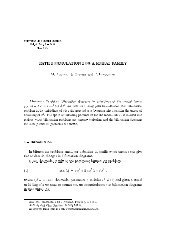
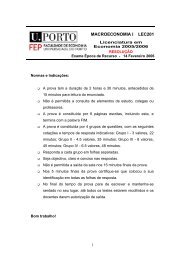


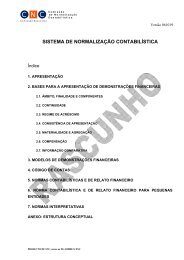

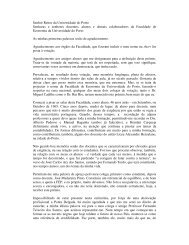
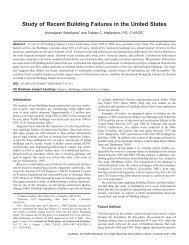
![Republica [Popular] de Moçambique. As Alterações Toponímicas e ...](https://img.yumpu.com/20789614/1/184x260/republica-popular-de-mocambique-as-alteracoes-toponimicas-e-.jpg?quality=85)




